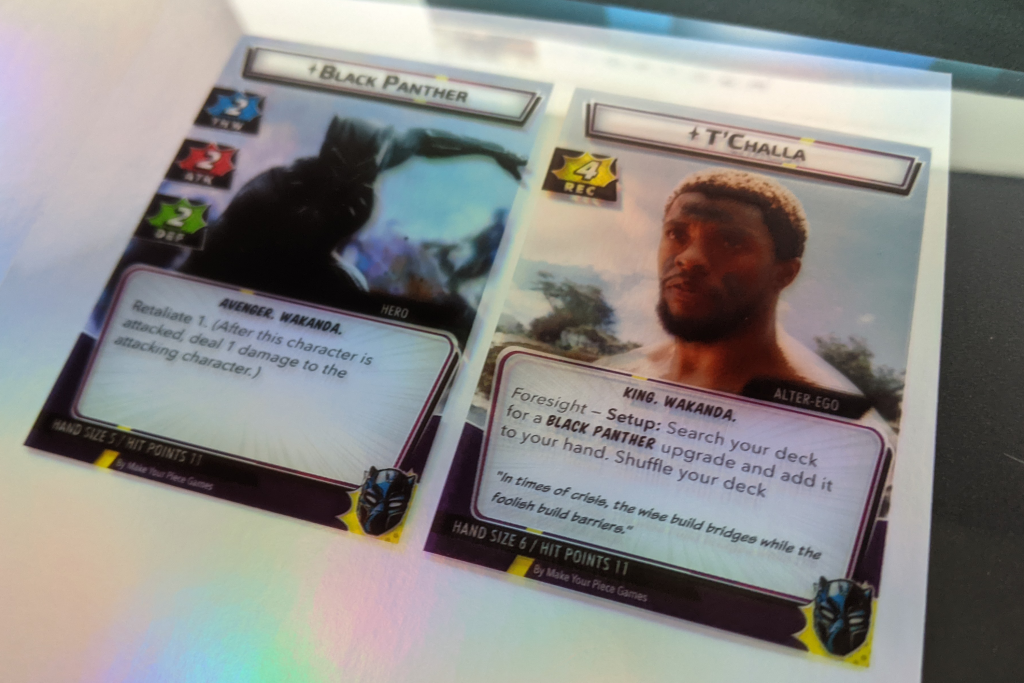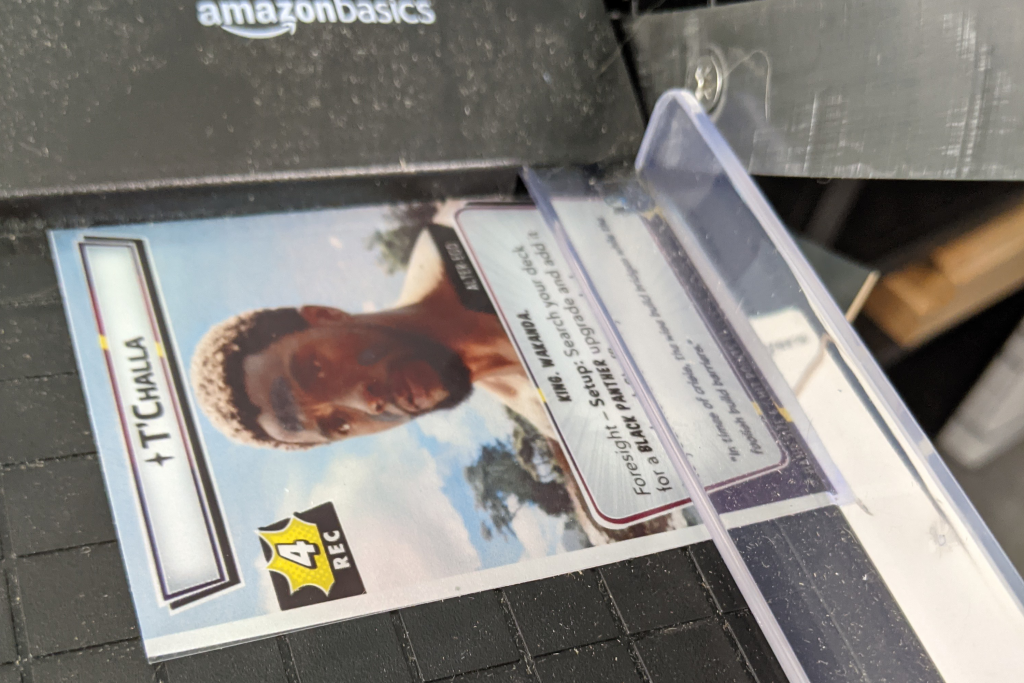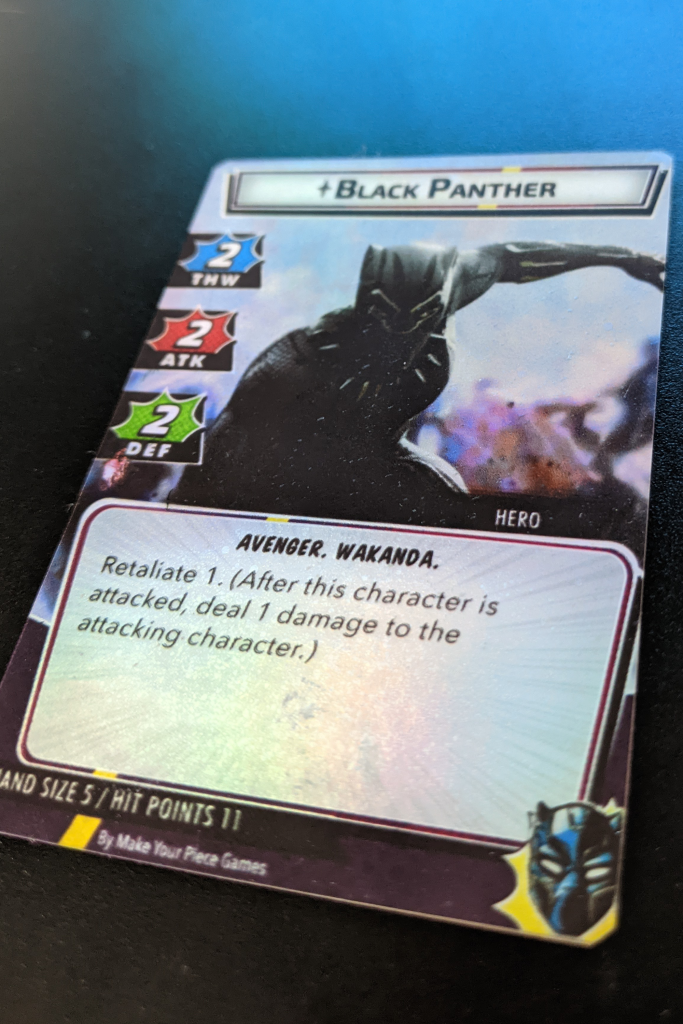I spent a lot of my formative gaming years playing Magic, so I’ve got a pretty solid appreciation for holographic cards. Recently, I saw this video with some details on how to make your own foil cards. It was a great starting point, but I wanted to talk a bit about my experience with the process, and where it can go wrong. Special thanks to Amerikano of the MCM Podcast for sending me down this rabbit hole.
Printing your Cards

The first step is to get your card printed onto a transparency sheet. If you’re old enough to remember, these were the clear plastic sheets teachers would use to project images during class. You’ll want to make sure to get the correct kind for your type of printer. I used inkjet sheets, but just be aware of what type of printer you’ve got.
Before we move on to the fancy sheets, we’re going to practice on regular printer paper that isn’t expensive. I have a hate-hate relationship with printers, so this step took me longer than I care to admin. Eventually, I had my image printing at a quality I was happy with by using HP’s photo settings.
I used my Chadwick Boseman alt arts I made last Summer. Because printing is made by adding colors to (typically) white paper, the color white on prints is the absence of most colors. Since we’ll be printing on transparent sheets, I wanted to use these images with dark foregrounds and light backgrounds, so that hopefully the holographic elements are mostly in the background.
Now that we’re ready for the main event, be very careful when loading the printer, and follow all the package instructions. These transparency sheets have two distinct sides, and only one of them is meant to hold ink. Printing on the wrong side and the ink will never dry and you could end up with a mess literally on your hands. Ask me how I know this. 🙃 And do your best not to touch the printed side before or after printing. Wouldn’t want a fingerprint smooshed between the two layers, right?
Holographic Paper for Holographic Cards
For this step, I used the exact product pointed out in the video, which is Holographic Foil Cardstock sold by Michaels. Amazon didn’t have it in stock, so I had to hop in the car for this one. They carry several foil cardstock products, so make sure you get the one that says holographic foil in the subtitle. This stuff is basically just card stock, so we’re gonna keep moving.
To Attach or Not to Attach
We’ve got some pretty transparent cards and some lovely foil cardstock. In the video, the two components were just married inside a sleeve and that’s the end of the story. I wanted to go a little bit further and see if I could attach the two. As a test, I cut out one of my cards and one card-sized piece of holographic foil. With a quick spray of adhesive, I attached the cardstock and the transparency sheet.
I half expected this from experience with spray adhesives before, but it did impact the finish a bit. It gives the art a sort of “speckled” finish if you look at it closely. If I were at a table playing the game, I wouldn’t even notice. So, make your own decisions here, and probably test on a single card before you commit. I ended up attaching everything
Let’s Get Chopping

Once you’ve figured out whether or not you’re going to attach your layers, all that’s left is to cut them out and get them in a sleeve. I used a paper cutter to make sure I got a nice straight edge. I also had some corner punches already, so I rounded my corners to make them feel more like a finished product. Entirely optional, but if you have them laying around, I highly recommend busting them out.
Wrapping Up Our Holographic Cards

The journey was long and fraught with peril, but in the end, I’m happy with the outcome. These pretty much matched my expectations, but definitely reminded me why I hate printers. I’d probably only stick with double-sided cards that aren’t shuffled in anywhere. These holographic cards are thicc. At a glance, I think they’re about three times the thickness of a normal card with two layers of cardstock (double-sided) and two transparency sheets. A single-sided card might not feel too different though.
Thank you to all our Patreon supporters who help making this content possible, especially:
Dan (KennedyHawk)
Chris C.
Allen
Thomas Giaquinto
If you’d like to support the site, you can use the Amazon affiliate links below. As an Amazon Associate I earn from qualifying purchases. Funds from these links go towards supporting this site.

